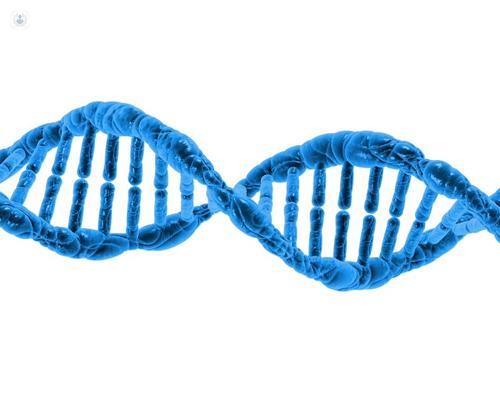How to deal with genetic abnormalities
Written by:There are couples who resort to assisted reproduction centers because of the risk they have of having offspring affected by a serious hereditary disease .
The human genome is like a library composed of different books (chromosomes) and these books in turn through pages full of information (genes). A badly structured sentence on a page can lead to alterations in the interpretation of the book and that is what happens in monogenic diseases : the alteration of a gene leads to the alteration of biological processes and, as a consequence, to a disease.

Each individual inherits two copies of each gene: one from the father and the other from the mother. The probability of having an affected child depends on the type of illness and the hereditary behavior of this. In the case of monogenic diseases, there are two types of inheritance: dominant and recessive.
In the dominant (for example, Hungtinton's disease, osteogenesis imperfecta, ...), and being only one of the affected parents, the probability of having an affected child is 50%.
In the recessive (eg, cystic fibrosis, Duchenne muscular dystrophy, Falconi anemia, ...), and being the two parent carriers, the probability of having an affected child is 25%.
Thanks to the techniques of in vitro fertilization and Preimplantation Genetic Diagnosis (PGD) couples carrying or affected by a monogenic disease have the opportunity to have children free of the disease.
According to the law 14/2006 on techniques of assisted human reproduction, PGD is a technique that can be used for " the detection of serious hereditary diseases, of early appearance and not susceptible to postnatal curative treatment according to current scientific knowledge, with a view to to carry out the embryonic selection of the non-affected pre-embryos for their transfer ". That means that you can only do PGD and healthy embryo selection for serious diseases that currently have no cure.
The couple should be given genetic counseling and an analysis of informativity for a correct diagnosis of embryos. Next, the couple must undergo in vitro fertilization treatment. To be able to analyze the embryos it is necessary to extract a cell from each one and thus analyze the genetic content of this one. Once the cells are analyzed, healthy embryos are selected for later use, either transfer to the mother's uterus or freeze.
Since the first pregnancy in Spain in 1994 after PGD, many couples have benefited from this technique. In August 2008 the first child in our country was born free of Osteogenesis Imperfecta - a disease known as "crystal bones" - thanks to the work of CREA in collaboration with the genetic research center Sistemas Genómicos.


